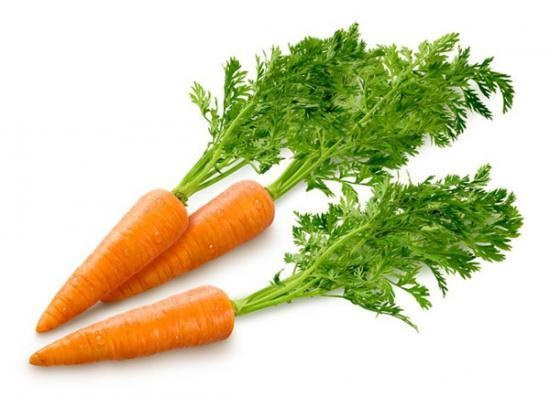Calcium deficiency: easily lead to umbilical rot disease, the disease originated in the umbilical part of the young fruit, the initial dark brown spot immersion, lesions gradually expand into a subsidence, leathery, brown or black necrotic areas, moist spots on the rot Black mold. The hard brown area can be extended to the inside of the fruit, causing early redness of the disease, which is a typical physiological disease. Various species are more susceptible to the disease.
Preventive measures: First, scientific balanced fertilization, in addition to full use of organic fertilizer as a base fertilizer, but also use a certain amount of superphosphate to prevent soil calcium deficiency. The second is to plough the land deeper and use plastic film to cover cultivation to keep the soil moisture relatively stable and reduce the loss of calcium in the soil. The third is timely watering, especially in the result period, pay attention to the balanced supply of moisture, and prevent sudden changes. In case of flowering, water should be watered in time in case of high temperature and drought, and pay attention to drainage after rain in the rainy season. Ensure the normal function of the root system. Fourthly, it is necessary to stably apply nitrogen fertilizer in the early growth stage to avoid overgrowth of nutrients. In the fruit setting period, it is possible to spray 1% of superphosphate calcium leaching solution or 1% calcium chloride solution on the fruit setting stage, spraying once every 10 days, or using Merrill Lynch. The young fruit was sprayed with high-efficiency calcium and other calcium products and sprayed once every 5 days to 7 days. Each fruit was sprayed 2 to 3 times. In addition, the fruit of umbilical rot should be promptly removed during the young fruit period in order to reduce the consumption of nutrients in the plant and ensure the growth of healthy fruit.
Potassium Deficiency: Tomatoes are crops that require more potassium. When potassium deficiency occurs, the veins remain green, but the leaf tissue between the main veins fades green, and leaves curl and reddish green. Severe burns occur along the leaf margins. The symptoms of potassium deficiency first appeared on the old leaves. Potassium deficiency reduced the acid content of the fruits and caused the fruit to fade internally. Sometimes, even if the potassium content in the soil is not low, due to the decrease of root absorption capacity in the middle and late periods, it cannot provide enough potassium to supply fruit development and plant growth. When the fruit matures, it still shows symptoms of potassium deficiency. When the supply of potassium in the soil is insufficient, the development of the fruit is at the expense of the damage to the leaves. Usually, when the 3 spikes to 4 spikes are present, the old leaves have a deficiency of potassium, and the symptoms are particularly obvious. If the root system is developed, the symptoms appear later.
Preventive measures: Potash fertilizer is applied during cultivation, and potassium fertilizer is volatile and easily leached. The combination of base application, top dressing and foliar spray should be adopted to ensure the supply of potassium in the middle and later stages.
Phosphorus deficiency: Phosphorus deficiency at seedling stage will make the plant grow slowly, the leaves will turn purple, and sometimes there will be no phosphorus deficiency in the soil. However, due to low temperature and drought, the absorption capacity of the root system will be hindered and phosphorus deficiency will occur. Phosphorus is less mobile in soil and requires a large amount of phosphorus at the seedling stage. It should be applied at the end and deep. Phosphorus is easily fixed by soil colloids, so the application of phosphate fertilizers can be combined with the application of mature organic fertilizers or open trenches, and granular phosphate fertilizers can be used to reduce the contact surface with the soil. Phosphorus is sprayed on the leaves in the middle and late stages of growth to increase the utilization rate of phosphate fertilizer.
Iron deficiency: iron is a trace element, but iron plays an important role in plant growth and development. Iron deficiency can make the leaves chlorophyll, but veins including veins of small branches are still green, especially alkaline soil hinders plant Absorption of iron. Iron fertilizer should be given but not excessive. Commonly used ferrous sulfate, base fertilizer 2 kg / acre ~ 7.5 kg / acre, foliar spray 0.2% to 1% of the aqueous solution.
Zinc deficiency: Insufficient zinc can yellow leaves between veins, and develop into black spots or purple, and severe zinc deficiency can hinder plant growth. During the growth period, foliar spraying of 0.02% to 0.1% aqueous solution of zinc sulfate can be prevented.
The molecular structure of carotene is equivalent to 2 molecules of vitamin A. After entering the body, it passes through enzyme action in liver and small intestinal mucosa, of which 50% becomes vitamin A, which has the effect of reinforcing liver and improving eyesight and can treat night blindness.As a kind of "filling material" in the intestinal tract, it can strengthen the intestinal peristalsis, thereby benefiting the diaphragm and preventing cancer.So the carrot is a germplasm crisp taste, rich nutrition of vegetables, known as "little ginseng", by the way, we also provide potatoes, carrots, cabbage, red star apple, fresh red Fuji, crown pear fresh fruit, fresh sweet pears, fresh broccoli, eggplant, fresh new potatoes, Garlic, garlic, Ginger, welcome to order.
Fresh Carrot,Red Carrot,Bulk Fresh Carrot,Fresh Sweet Carrot
Jining Sunagro Trade Co., Ltd. , https://www.sunagro-food.com